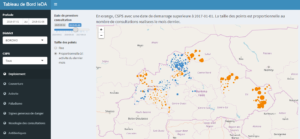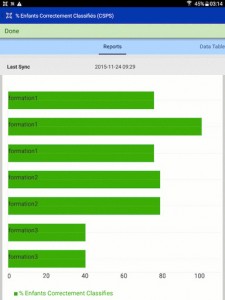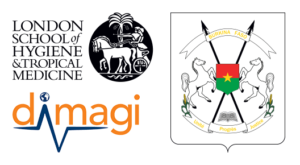Developing countries in Sub Saharan Africa suffer from infant mortality rates over 15 times higher than countries in the European Union.
Developing countries in Sub Saharan Africa suffer from infant mortality rates over 15 times higher than countries in the European Union. Most of these deaths could have been avoided through cost-effective interventions. Ensuring that sick children receive adequate care in a country where the population mostly lives in rural areas requires improved accessibility and high quality primary health care services.
The Integrated e-Diagnosis Approach – IeDA – is the product of a comprehensive assessment of limits and potentials of health systems. It aims to improve the quality of health services.
It is an innovative strategy combining mHealth tools and data-driven quality improvement methodologies. It relies on a set of components that converge in a coherent package by relying on the information generated by one another, adding value to it and acting upon it.
IeDA includes the REC, a mobile diagnostic support tool for IMCI designed for nurses. By automating critical tasks, the number of diagnostic errors is reduced.
With IMCI, IeDA provides the implementation on a clinical protocol that targets the main illnesses responsible for the death of children. IMCI is also widely adopted in developing countries as the national strategy at primary health care which make IeDA a very replicable approach.
Because the REC is built with the CommCare platform it very easy to add additional protocols and services. This allows for a progressive integration into the health system.
Understanding that there cannot be quality of care without on-site coaching and supervision IeDA introduces data-driven quality improvement methodologies targeting health workers and district managers.
Health workers are taught how to assess the daily issues they face and how to test ideas that will improve their working conditions. A team dynamic is created with the facilities to promote the idea that quality of health care is a coordinated effort.
IeDA’s on-the-job eLearning tools address the issues of traditional training strategies that are not capable of building the knowledge required to sustain lasting changes in practices.
The eLearning tools are currently being developed and will be added to IeDA by the end of 2016.
The data collected by the mobile tools of IeDA are processed and shared to inform stakeholders about health workers performance, supervision and training needs. This specific aspect becomes critical at scale in order to efficiently manage health systems.
In order to do so, IeDA provides a set of data products that are specifically designed for each actor of the health system.

An online dashboard for policy makers at the central level. All the data produced by the IeDA is made available in a set of thematic ready-to-use maps and charts. It provides an close to real-time situation on the implementations of protocols and services on the field.
Excel dashboards for district managers having unreliable internet connectivity. Key quality assurance indicators are programmed so that supervisions can be targeted to the health facilities that need it most.
 A set of comparative district and health facility statistics directly available on the REC about health workers so that their motivation and sense of accomplishment is leveraged to improve the quality of care.
A set of comparative district and health facility statistics directly available on the REC about health workers so that their motivation and sense of accomplishment is leveraged to improve the quality of care.
IeDA is an original idea of Terre des hommes.
An original idea of
![]()
Perfected and implemented by



Financed by
![]()
![]()
![]()
![]()
Copyright © 2024 Terre des hommes Burkina Faso | Powered by atman marketing
The figures published on this website come from REC data analysis and Ministry of Health of Burkina Faso reports and surveys